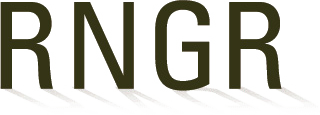
Anaphalis (margaritacea)
|
Kate Wellons Institute for Applied Ecology Corvallis, Oregon 97333 541-753-3099 katewellons@appliedeco.org https://appliedeco.org |
|
| Family Scientific Name: | Asteraceae | ||
|---|---|---|---|
| Family Common Name: | Sunflower family | ||
| Scientific Name: | Anaphalis margaritacea | ||
| Common Name: | Western pearly everlasting | ||
| Species Code: | ANMA | ||
| Ecotype: | Seed was collected from 4 sites along the central-north coast of Oregon (Lincoln, Tillamook, and Clatsop counties). | ||
| Propagation Goal: | Seeds | ||
| Propagation Method: | Vegetative | ||
| ProductType: | Propagules (seeds, cutings, poles, etc.) | ||
| Stock Type: | Seed from seed increase | ||
| Target Specifications: | Clean, viable seed, free of noxious weed seed. | ||
| Propagule Collection: | Plugs used to establish field were sown with seed collected from 4 sites along the central-northern Oregon coast. | ||
| Pre-Planting Treatments: | Seedling trays were brought outside and lightly covered with remay cloth to acclimatize and harden off two weeks prior to planting. | ||
| Growing Area Preparation/ Annual Practices for Perennial Crops: |
The field was tilled after the previous crop was harvested, then flame weeded at 2 different intervals during the winter season. | ||
| Establishment Phase: | 3” holes were dibbled into the field and plants were installed on 3-15-23 in 5 rows, 1’ between rows and 1’ between plants within row. | ||
| Active Growth Phase: | Between 5-25-23 and 7-14-23, irrigation was administered twice a week by hand with a hose and wand. Supplemental irrigation was administered the week leading up to and during the heatwave in early May. In 2024, irrigation was not administered to this field. 16-16-16 Fertilizer was applied at a rate of 50 lbs Nitrogen per acre in early spring. | ||
| Harvesting, Storage and Shipping: |
In 2023, the field was harvested 3 times a week between July 20th and September 28th. In 2024, the field was harvested twice a week between August 14th and October 1st. Harvest times are determined when at least 25% of inflorescences in a cluster expand its bracts from a tightly closed ball into an open, puffed-up seed head. The seed was harvested by hand from the matured clusters of branched pedicels that make up an indeterminate corymb inflorescence. After drying, the brush machine was used to release the seed from the hypanthium, while also removing the pappus from the seed. The Clipper and Air Density Separator were then used to separate the chaff and unfilled seeds from the rest of the lot. |
||
| Other Comments: |
On 8-7-23, small black egg-like cylinders were observed amongst the developing seed. In the following weeks, small caterpillars appeared in the hypanthium. No-Pest strips were added to a seed harvest collection bin containing seed harvested prior to observing the pest. Subsequent harvests were also placed in the bin to dry. In 2024, this field did not experience any pest disturbance. Protocols developed by Mara Friddle and Jeni Nugent, Institute for Applied Ecology. |
||
| References: | OSB Recovery Challenge Grant 2022-2024: Plant Production Protocols. Institute for Applied Ecology, Corvallis, Oregon. | ||
Citation:
Wellons, Kate. 2025. Propagation protocol for production of Propagules (seeds, cutings, poles, etc.) Anaphalis margaritacea Seeds Seed from seed increase; Institute for Applied Ecology Corvallis, Oregon. In: Native Plant Network. URL: https://NativePlantNetwork.org (accessed 2025/10/16). US Department of Agriculture, Forest Service, National Center for Reforestation, Nurseries, and Genetic Resources.



